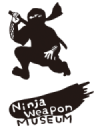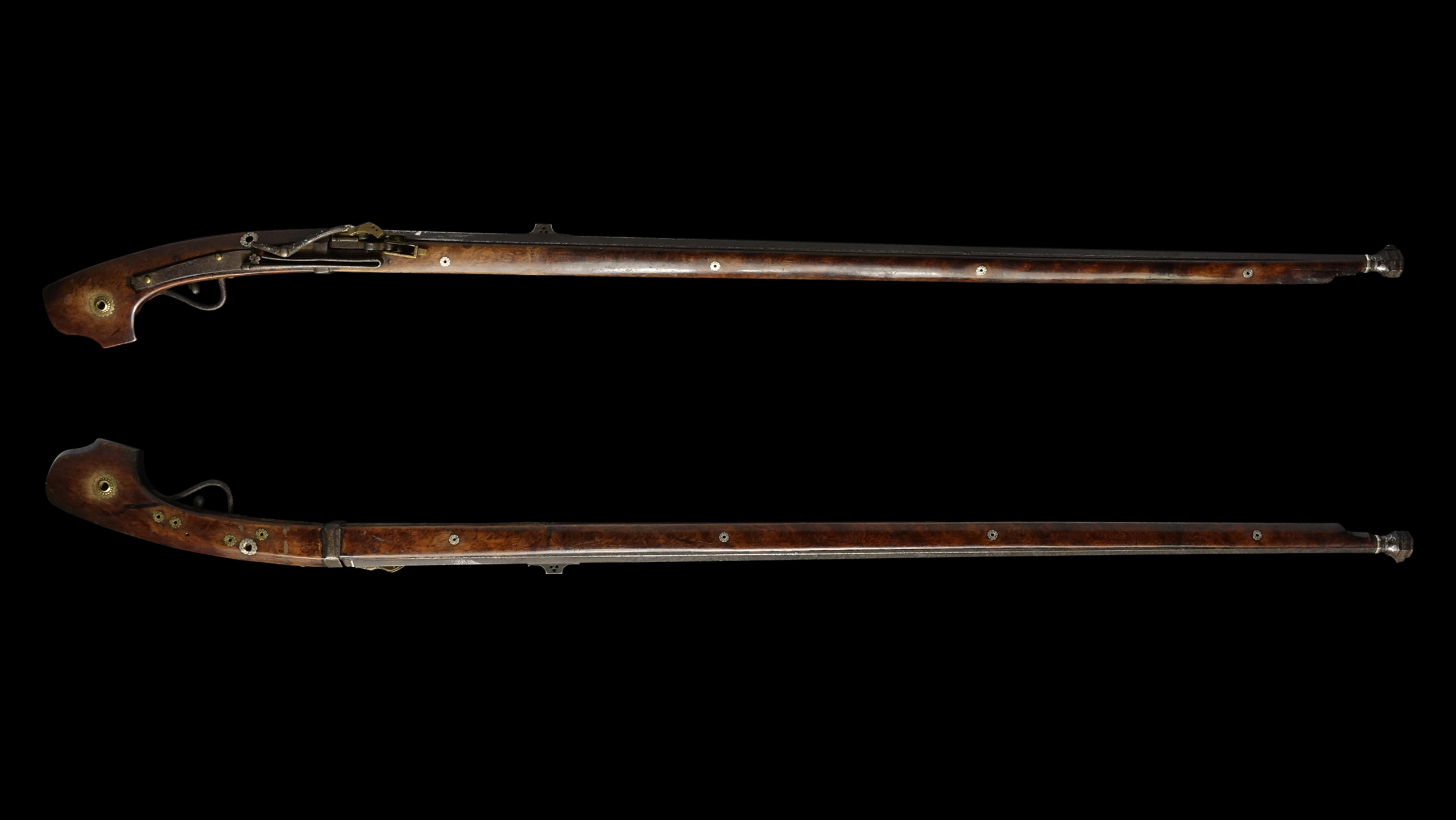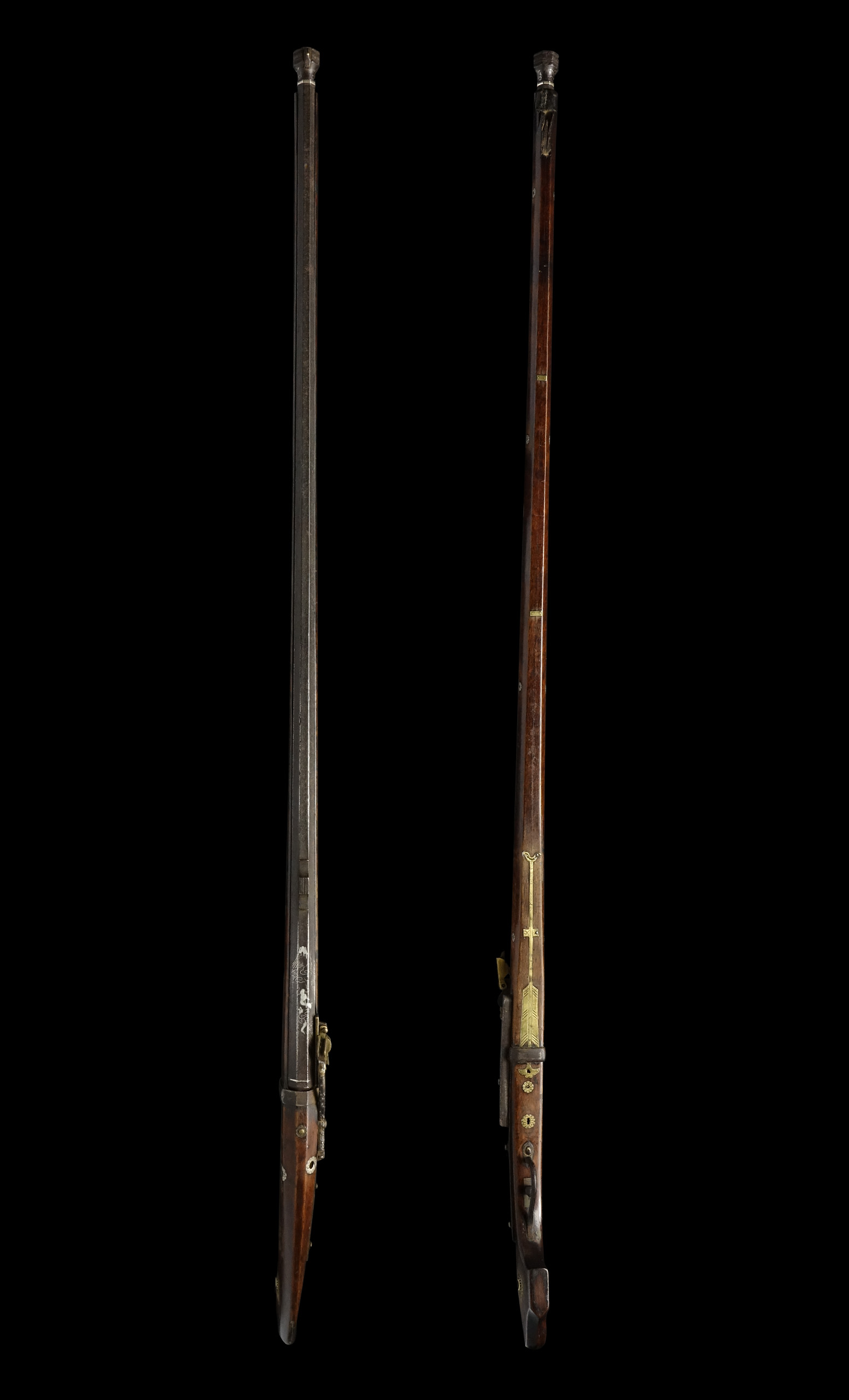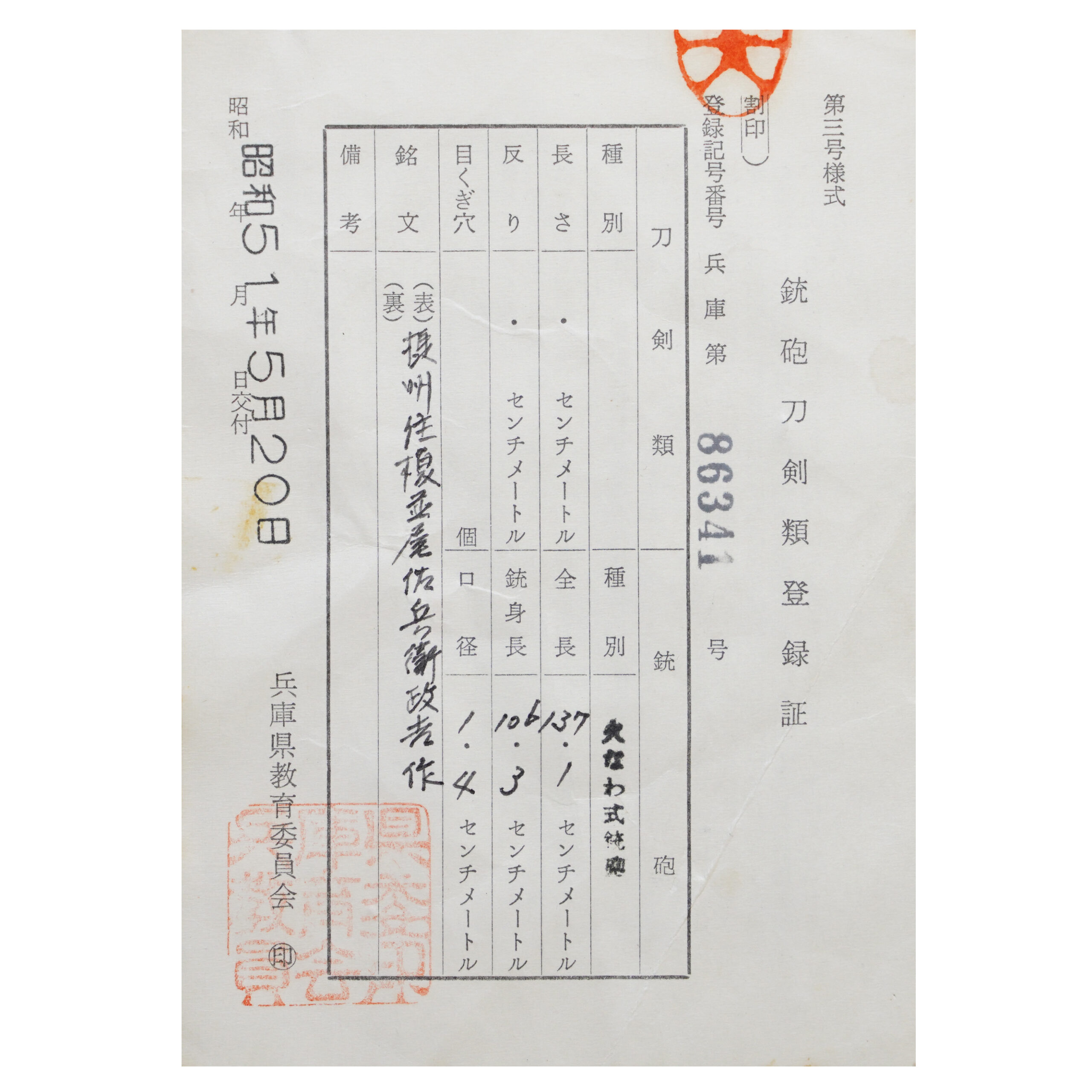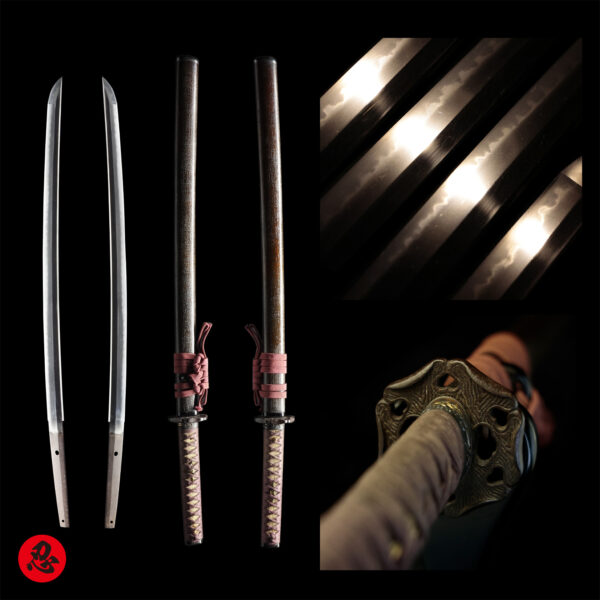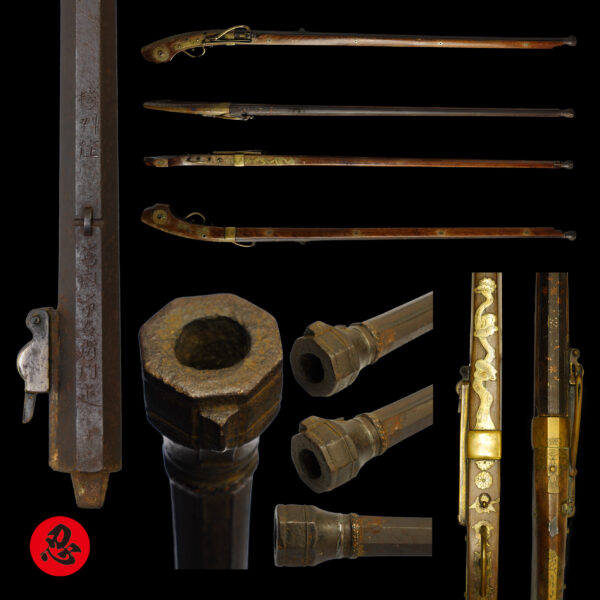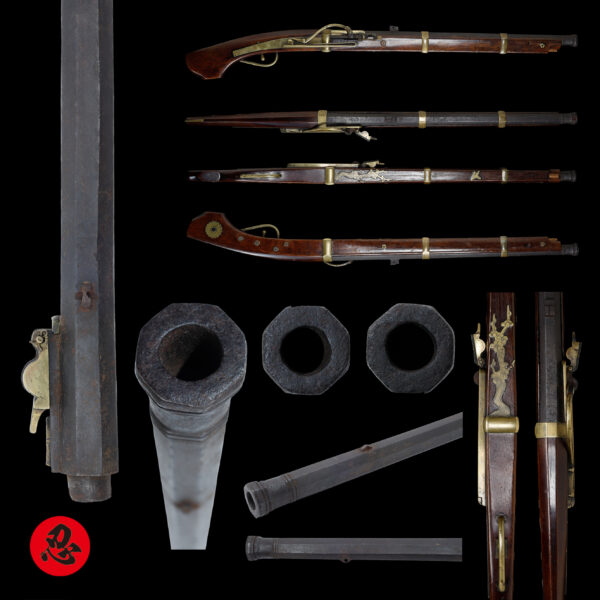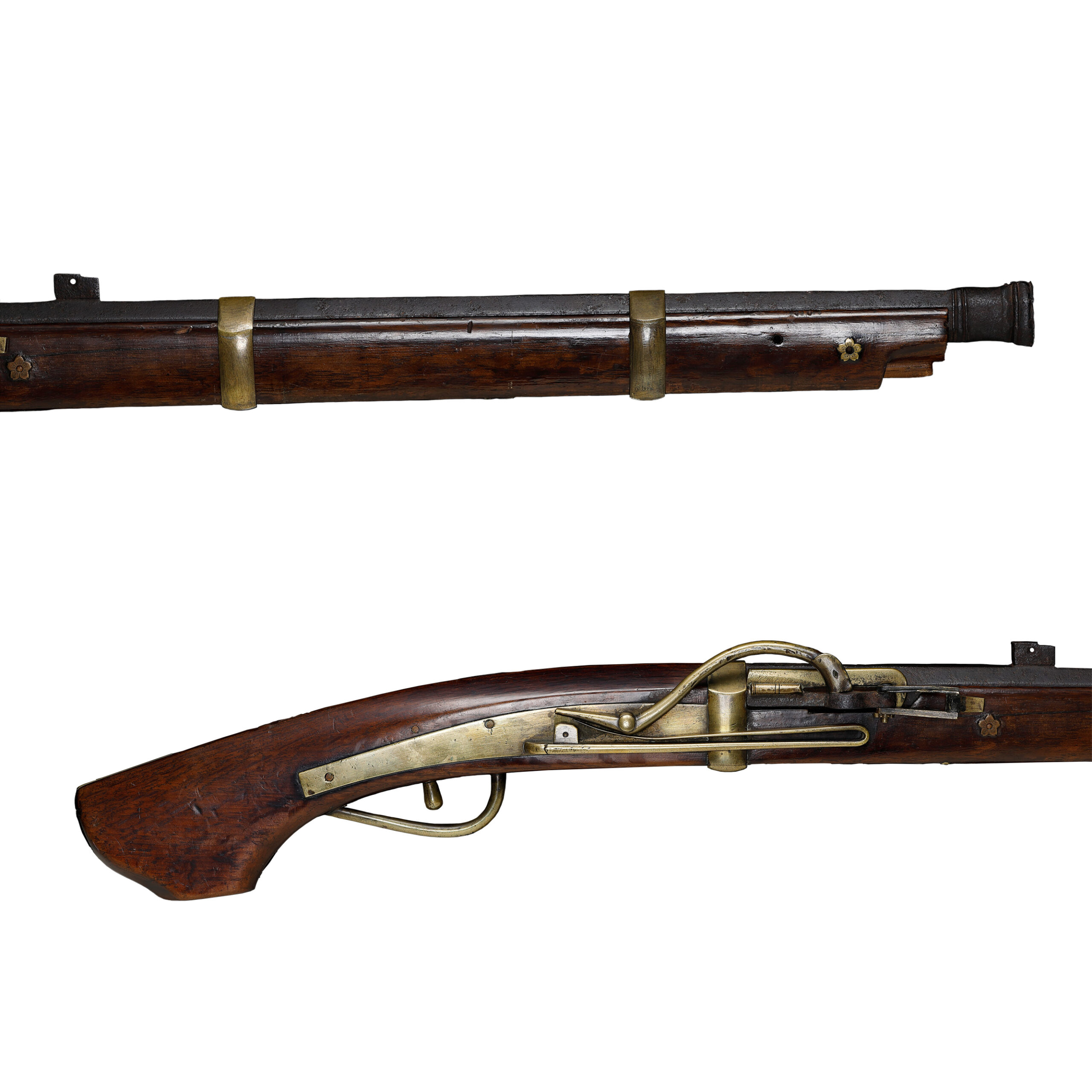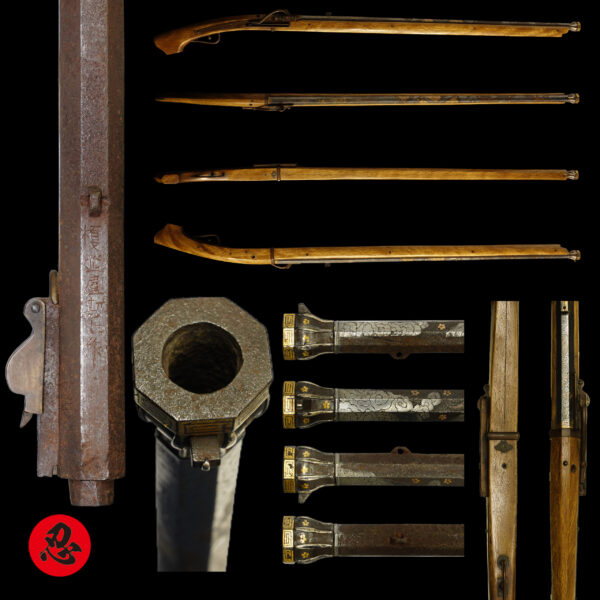Antique Japanese Matchlock Signed by Masakichi
【Description】
Summary
This matchlock has a decorative appearance. For example, Mt. Fuji and a dragon are drawn on the barrel with silvery paint. It could be said that Mt. Fuji is a symbolic existence representing Japan’s landscape. Its motif has also been appreciated as an auspicious design since ancient times. A theory says that its Japanese name 富士 was associated with 不死 (pronounced as Fushi, and means immortality); therefore, some people thought the Mt. Fuji design represents longevity. In another theory, it was also compared to another Japanese word, 無事 (pronounced as Buji, and means safe). In this idea people used this motif to pray for good health and the family’s safety.
The dragon has also been treated as an auspicious motif. Initially, the dragon was an imaginary creature found in ancient foreign traditions or myths. Its body is likened to nine animals: antlers are deer, the head is a camel, eyes are demons, the neck is a snake, the belly is the Mizuchi (蛟, a mythical animal in Japan that looks like a snake and has a horn and four legs), scales are fish, claws are falcons, palms are tigers, and ears are cows. It was thought that the dragon would reign at the top of all animals because of its odd-looking appearance.
If you look at the bottom of the Daigi/Jusyou (台木/銃床, the wooden part that holds the barrel), you will find a Kabura-Ya (鏑矢) is designed and colored with gold. Ya (矢) means an arrow in Japanese. Since arrows fly straight forward, it was possibly designed here as a wish that the bullet fired by this matchlock would fly directly and hit the enemy. The Kabura-Ya is a type of arrow attached to the Kabura (鏑, a kind of weapon) to the tip of an arrow. The Kabura-Ya whistles when it is shot. Therefore, it was used as a signal on the battlefield to notify the start of a battle. In Japan, we can find it in traditional events such as Yabusame (流鏑馬, horseback archery) today. Also, it is enjoyed as a good-omen interior that is called the Hamaya (破魔矢). People believe this sacred arrow will ward off evil.
We hope you will cherish the beauty of these decorative parts when you display this matchlock in your home.
*Please keep in mind that there is no certificate for this matchlock. In addition, all the matchlocks we deal with are for the purpose of appreciation, and we do not guarantee their practicality. We do not assume actions such as loading gunpowder or bullets, disassembling, and firing. Even if an incident or accident occurs due to you modifying the product for purposes other than viewing, we will not take any responsibility. Thank you for your understanding.
【The brief history of matchlocks in Japan】
The introduction of matchlock
It is said that the Hinawa-Ju (火縄銃, matchlock) was introduced in Japan in 1543. A foreign merchant ship drifted ashore in Tanegashima (種子島), located in Kagoshima prefecture, and two Portuguese merchants on board carried two matchlocks. Tanegashima Tokitaka (種子島 時尭, 1528-1579), who was the lord of Tanegashima at that time, treated them with respect and bought these matchlock guns at a high price. One of the matchlock guns he had purchased was lent to a swordsmith in Tanegashima and ordered to be duplicated. It is said that matchlock guns spread throughout Japan through this process.
Appearance of matchlocks on battlefields
This is how matchlock guns were brought to Japan. And this weapon was first brought into actual combat in Japan at the Battle of Kurokawasaki in 1549 in Satsuma (薩摩, today’s Kagoshima prefecture). However, guns did not become the main weapon immediately after their introduction. To tell the truth, weapons such as spears, bows, and arrows were still the primary weapons at that time, and it is said that guns played an auxiliary role in intimidating the enemy’s horses with the sound of firing. According to historical facts, matchlock guns were used as the primary weapon at the Battle of Nagashino in 1575.
Success of matchlocks
Swords, spears, bows and arrows require training and combat experience. On the other hand, a matchlock was an easy weapon to learn and handle, even for those with no combat experience. Therefore, as matchlock guns became more mass-produced, the number of tactics in which Ashigaru (足軽, hired soldiers who were not Samurai, the main force in the Warring States period) were given to fight with matchlocks increased. Of course, not only Ashigarus but also gun units made up of Samurai were organized and played an active role on battlefields. It makes sense that matchlocks, which even beginners could aim for a certain amount of speed and accuracy, have spread battlefields.
Variety of matchlocks
Craftsmen who mastered replication techniques developed various forms of matchlocks, imagining all kinds of battlefields. A standard matchlock gun is about 130 cm long. There were also the Samazutsu (狭間筒), which were designed for battles on ships and in castles, the Bajouzutsu (馬上筒), which were for close-quarters combat and could be fired with one hand while riding a horse. There was also the Tanzutsu (短筒), a self-defense short cylinder that you could hide in your pocket, and the Ohdeppou (大鉄砲), a powerful cannon. In addition, various types of matchlocks were produced depending on the school and region, and most of them were handmade, so there is no interchangeability of parts.
The largest gun possession country in the world
According to a theory, the number of guns possessed by Japan during the Warring States period reached 500,000, which was an incredible number in the world. Tanegashima Tokitaka, mentioned above, gifted the matchlock (which was a different one from the one he lent to the swordsmith) to the lord of the Satsuma Domain with a matchlock gun. It is said that the lord of the Satsuma domain presented it to the 12th Shogun of the Muromachi shogunate, Ashikaga Yoshiharu (足利 義晴, 1511-1550). And then Yoshiharu lent it to a swordsmith in Ohmi Kunitomo (近江国友, today’s Nagahama city, Shiga prefecture) and ordered him to reproduce it. At last, a local swordsmith succeeded in duplicating two swords in about half a year. In this way, the domestic production of matchlock guns was achieved in a relatively short period of time in multiple areas. It is amazing the high level of skill of the swordsmiths back then. This was probably due to the excellent iron-making and casting techniques obtained from the production of Japanese swords. However, in the Edo period, Japan welcomed a time of peace, and the demand for guns decreased. Finally, people stopped the improvements of matchlock guns.
Full length: 137.1 cm (54.0 inches)
Barrel length: 106.3 cm (41.9 inches)
Caliber: 1.4 cm (0.6 inches)

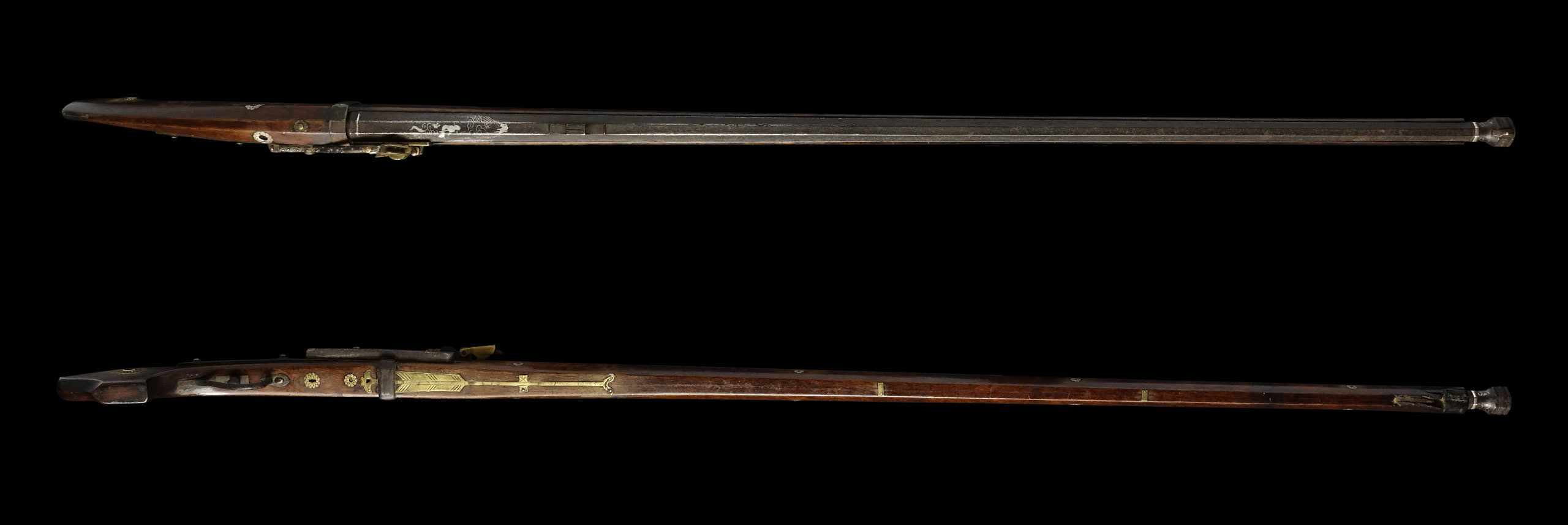
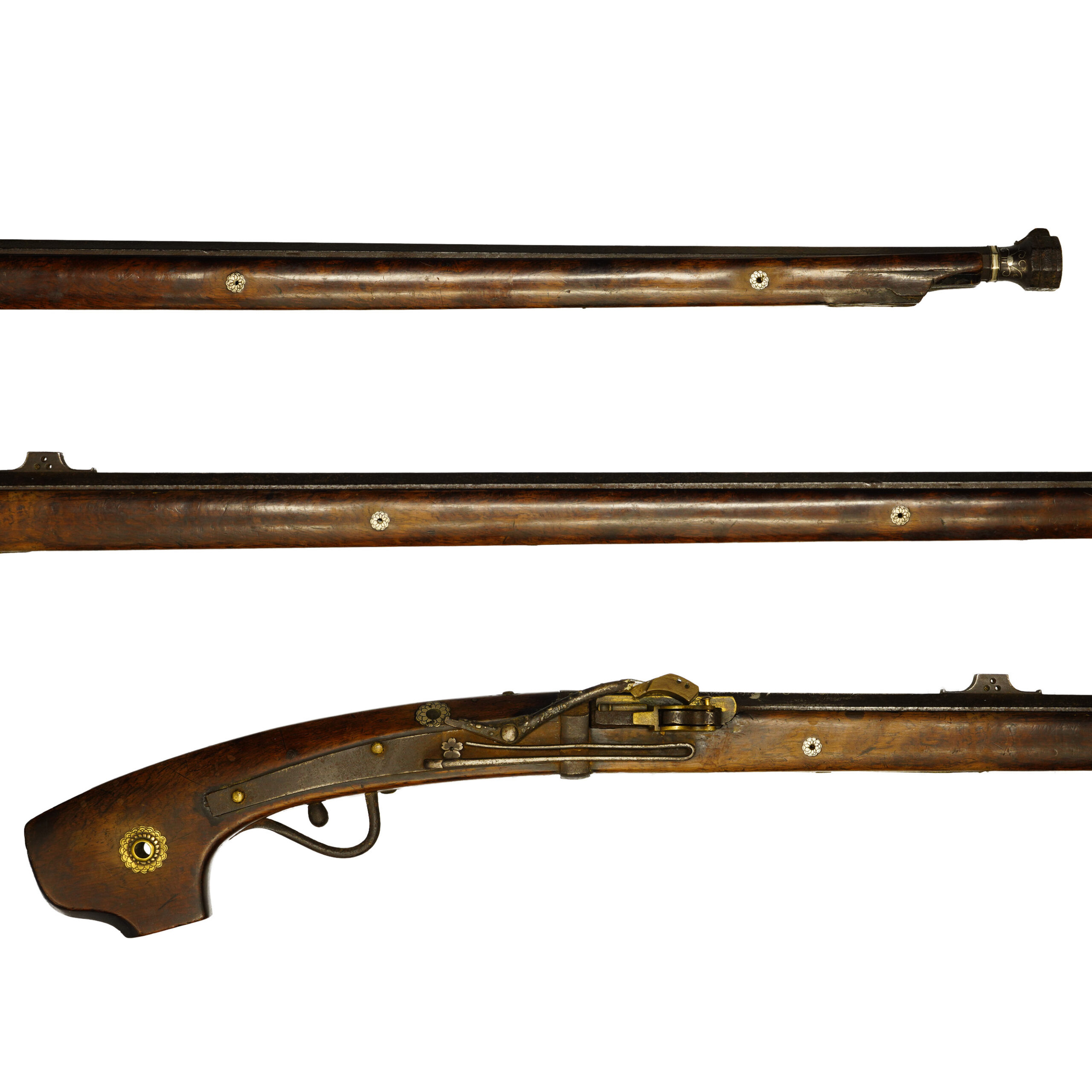
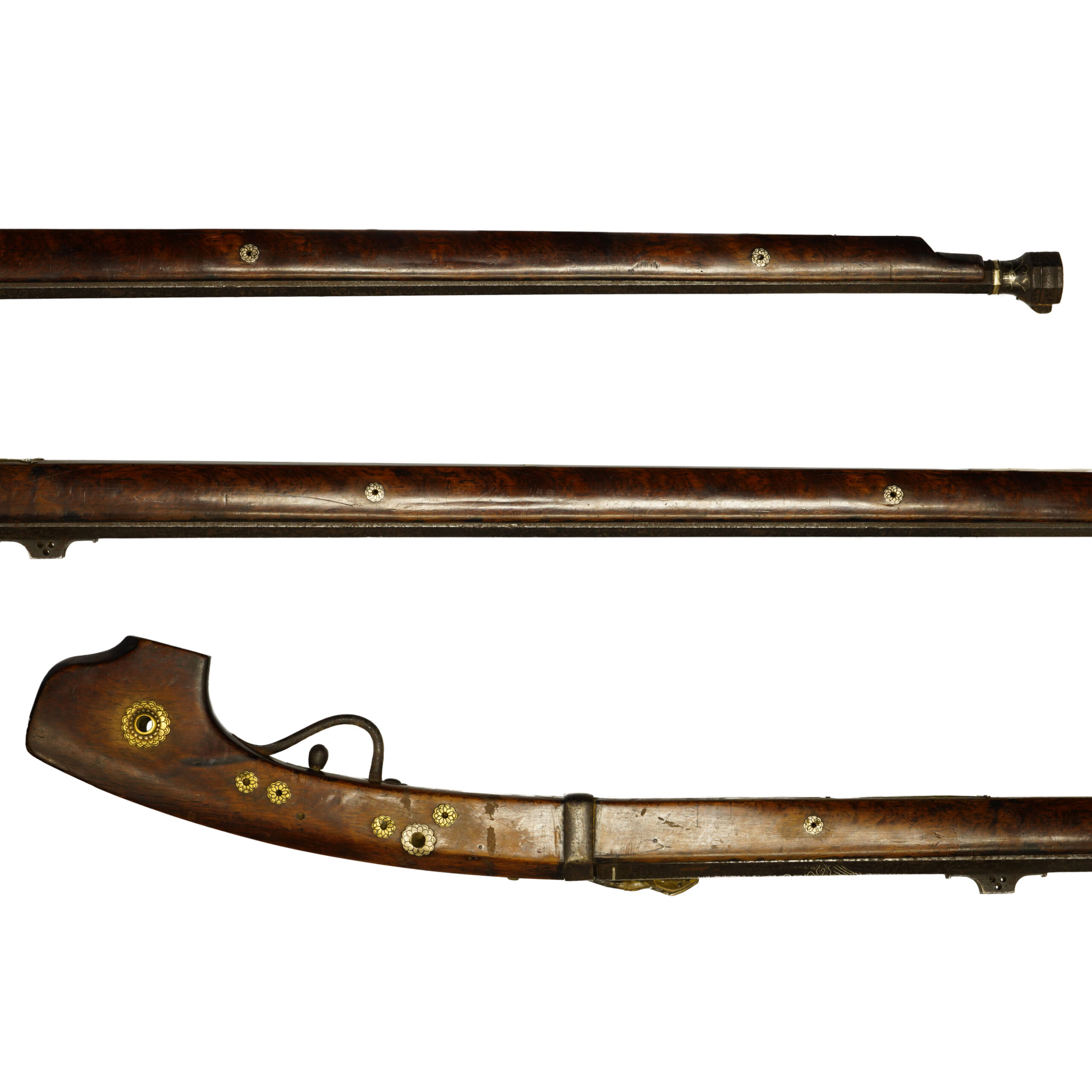
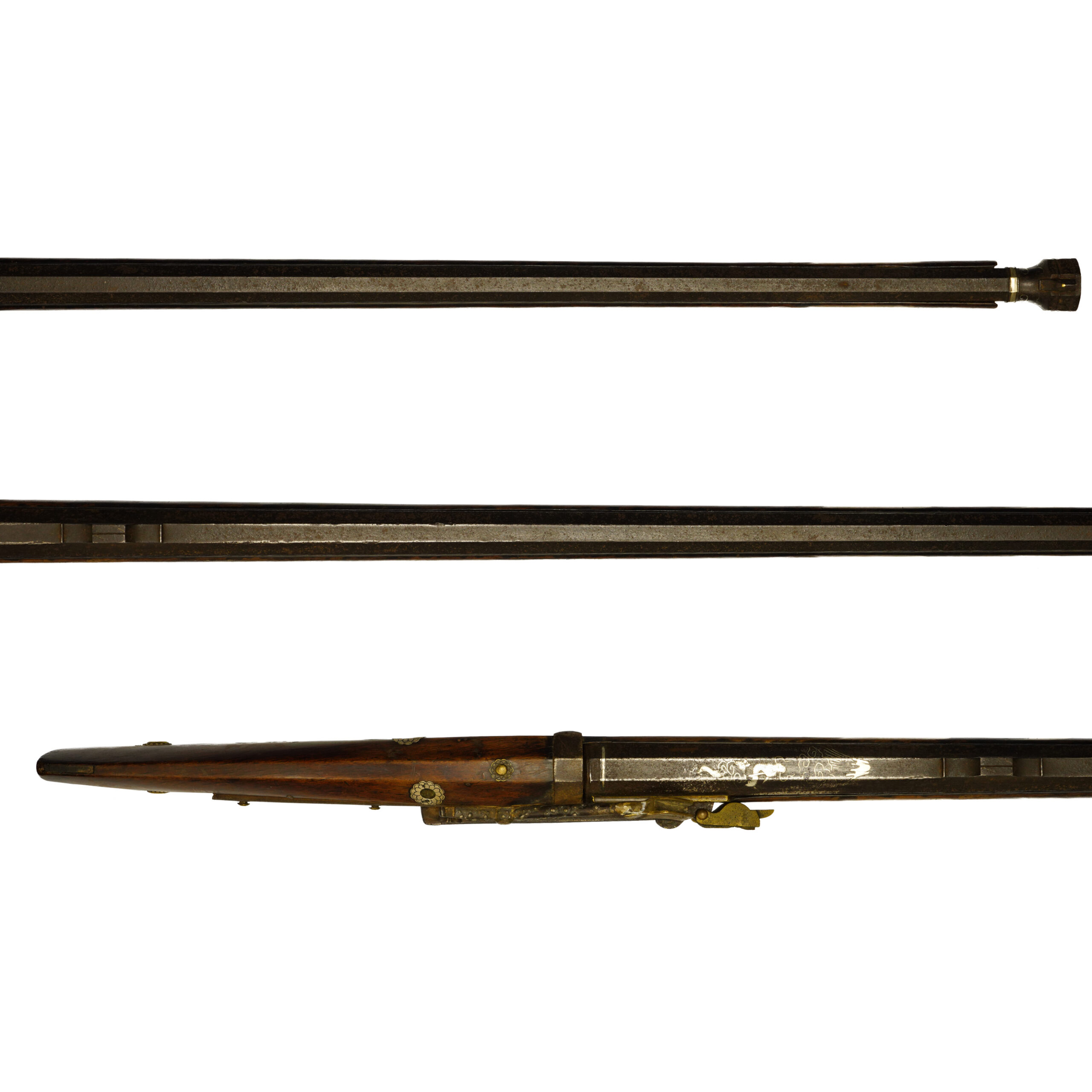
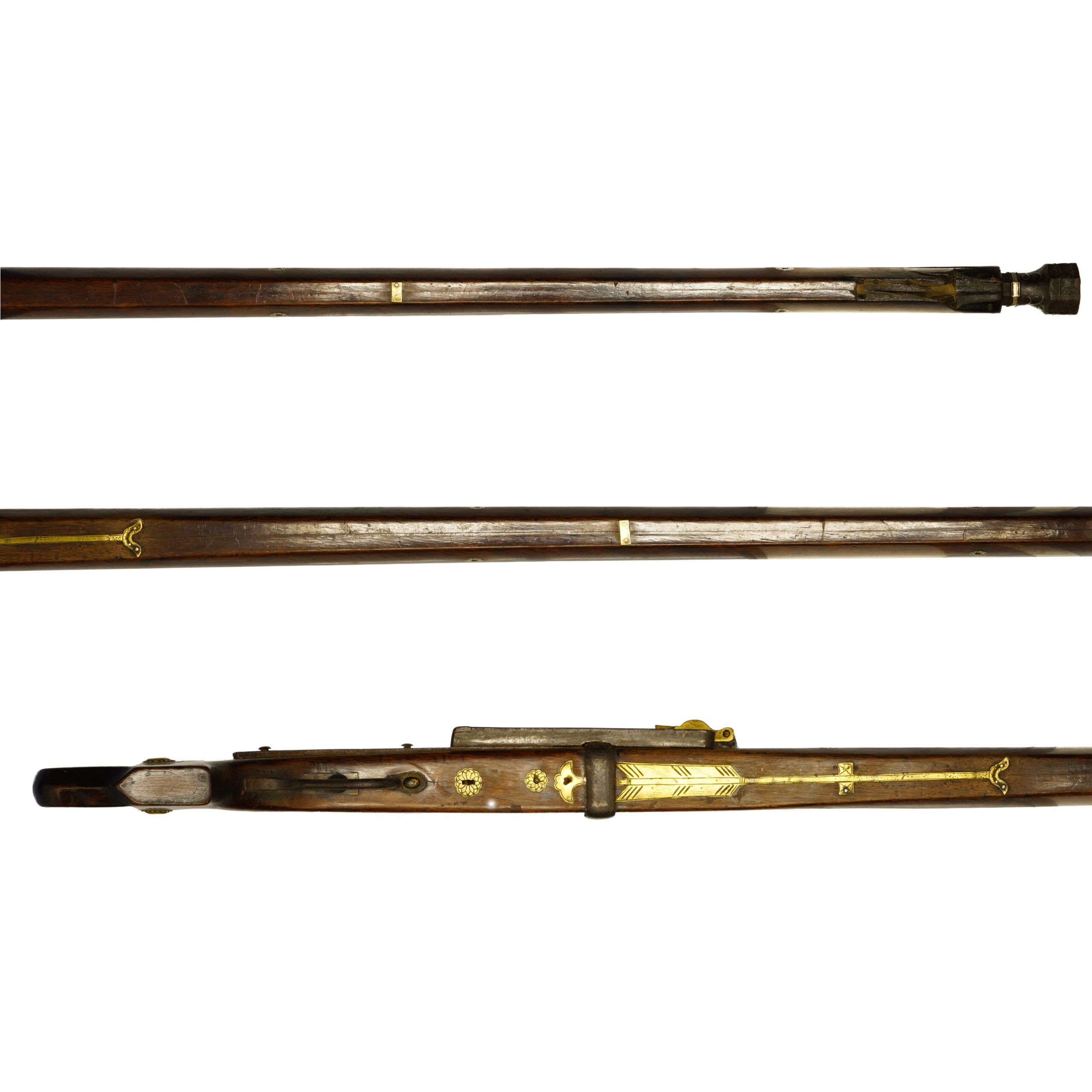
Mei (銘, engraved inscription)
There is an engraved inscription on the barrel. It is written as 摂州住 榎並屋佐兵衛政吉作. It means 榎並屋佐兵衛政吉 (Enamiya Sahee Masakichi), who lived in 摂州 (Setshu, part of today’s Osaka and Hyogo prefecture) made this barrel.
Speaking of Setshu, Sakai (堺, today’s Sakai city in Osaka prefecture) is famous and one of Japan’s leading production areas of guns. The matchlock guns of Sakai are called the Sakai-Dutsu (堺筒) because of their high technical prowess. A view says that the Sakai Dutsu attached more importance to decorativeness than function, but there are various shapes and qualities.
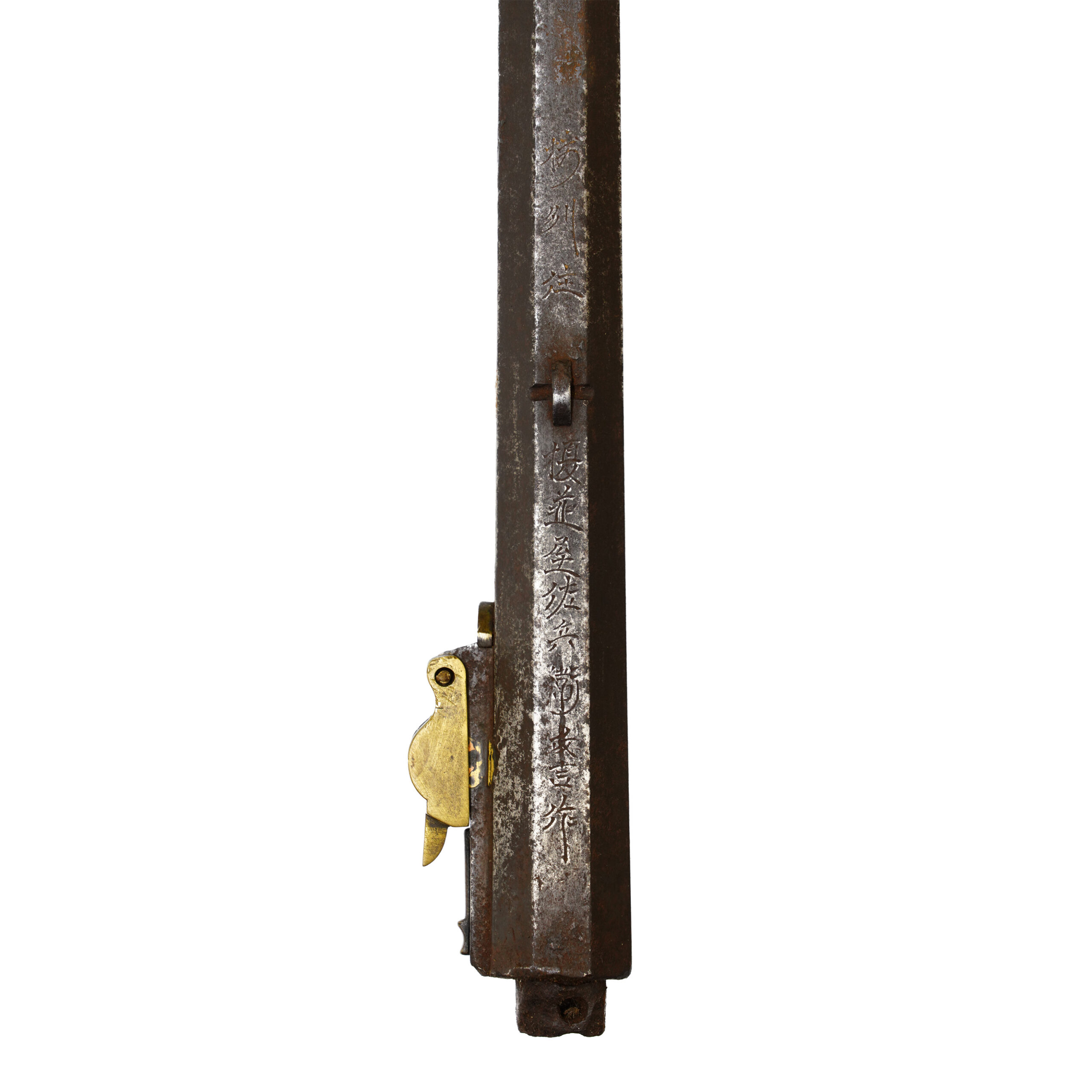
Jukou (銃口, the muzzle of a gun)
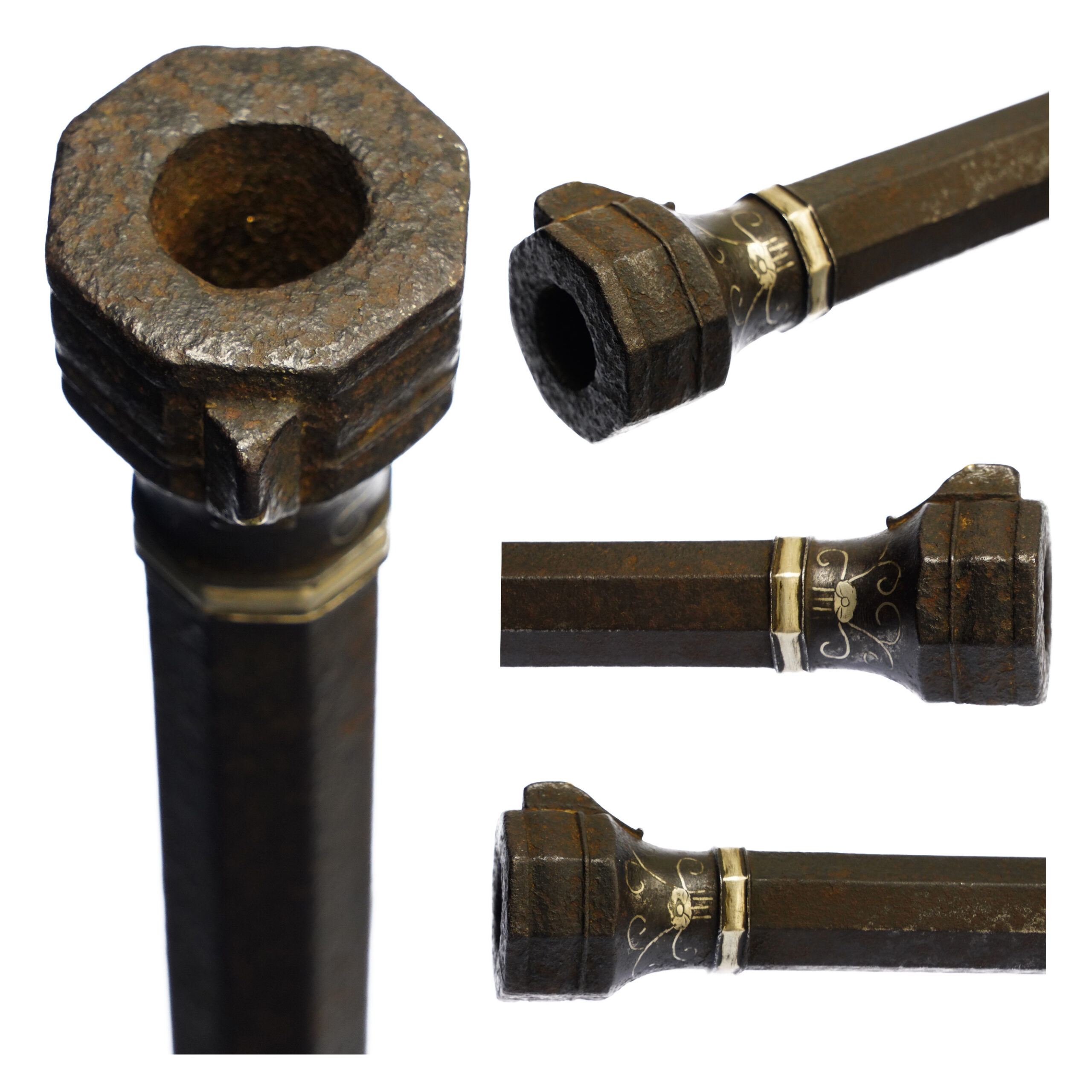
Registration Number: Hyogo 86341
The Board of Education in Hyogo prefecture issued a registration paper for this matchlock. It is called Ju Hou Tohken Rui Tourokusho (銃砲刀剣類登録証). Bunkachou (The Agency for Cultural Affairs) acknowledges a Japanese matchlock with this paper as a work of art.
The appraisal of old-fashioned firearms, such as matchlock firearms, is based on the following: Japanese-made guns were manufactured before the third year of Keio (1867), and foreign-made firearms were introduced to Japan before the same year. It shall be determined whether or not it falls under any of the items of
1. Matchlock-type, flint-type, tube-type, paper-wrapped-type, or pin-type (crab-eye) guns whose beauty is recognized in terms of shape, inlay, carving, etcetera, or those with value as materials.
2. Firearms equivalent to those listed in the previous item that are valuable as antiques (excluding those that can be used with ammunition that has been in practical use since the 19th year of the Meiji period).
This paper will need to be returned to the board of education when the matchlock is being shipped abroad, but you can receive a copy of it. An English translation of this registration paper is available on request.
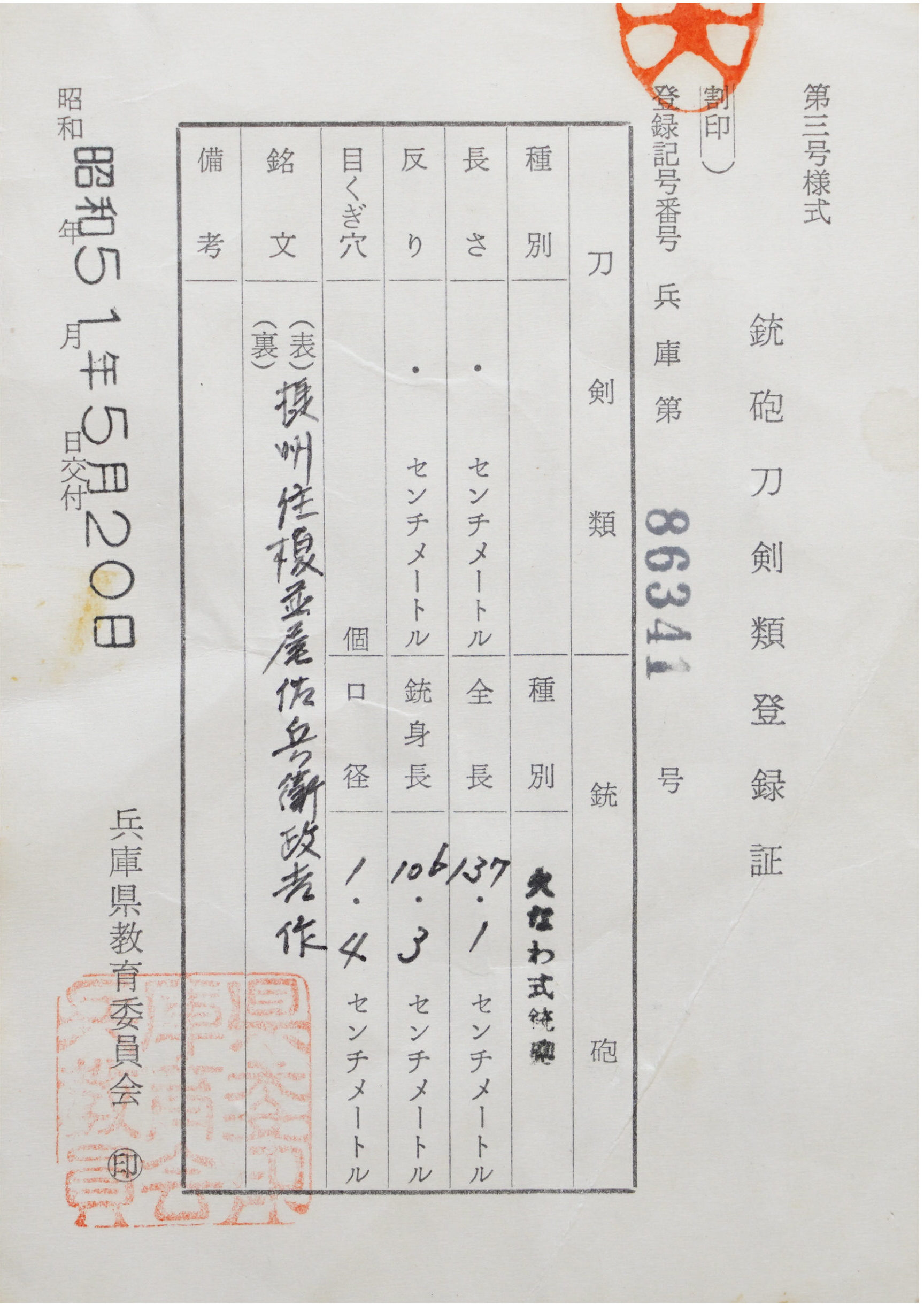
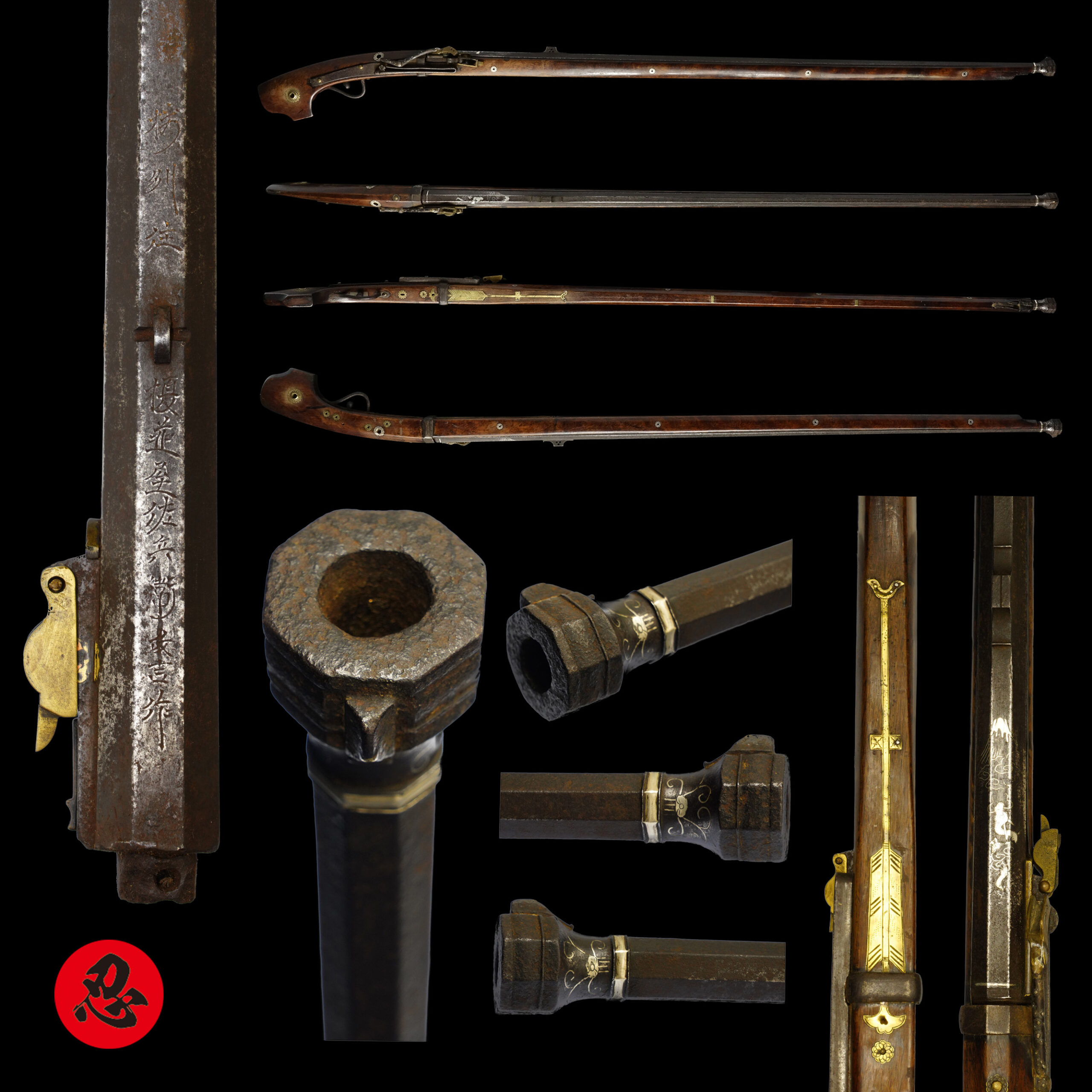
【About us】
Ninja Weapon Museum is located in Kanazawa, Japan, exhibiting antique artifacts related to the history of Ninja and Samurai.
【Caution】
All the matchlocks we deal with are for the purpose of appreciation, and we do not guarantee their practicality or functionality. We do not assume actions such as loading gunpowder or bullets, disassembling, and firing. Even if an incident or accident occurs due to you modifying the product for purposes other than viewing, we will not take any responsibility. Please also make sure that you are allowed to import an antique Japanese matchlock. Thank you for your understanding.
【Japanese Matchlock & Export Process】
The Japanese matchlocks we deal with are made in Japan during the Edo period. Each Japanese matchlock is registered under the Agency for Cultural Affairs and the Board of Education in Japan. They issue a registration paper for each Japanese matchlock for its owner in Japan to legally possess it. The Japanese matchlock with its registration paper means it was traditionally hand-forged in Japan.
To legally export the matchlock from Japan to other countries, we will have to apply for its permit to the Agency for Cultural Affairs (Bunkacho) and return the original registration paper to the Board of Education. It normally takes around 2-4 weeks to receive this permit after submitting required documents. And we would like you to expect at least 1-1.5 months for your order to arrive at your given address after you ordered.
【Payment method】
We accept payment through Stripe (Credit card), Apple Pay, or ChromePay, all of which are secure payment methods. If you prefer other payment methods, please contact us. You may either pay in JPY, USD. The price is set in Japanese Yen. Prices in other currencies are automatically calculated based on the latest exchange rate.

【Shipping duration】
We can only ship this antique matchlock to the USA. If you don’t live in the USA and like to order, please contact us first before making a purchase. We offer Free International Shipping as long as we can send antique matchlocks by EMS.
We normally ship by EMS (Express Mail Service) provided by Japan Post. We will send you a tracking number for your order as soon as we hand it to the post office. We will put 100 % insurance on the shipping document without any extra charge. Based on the total amount, there might be a duty tax or other fee for you to pay, depending on the countries. We use package cushioning to protect the item and put it in a PVC pipe, which is one of the most secure packages because of its durability.
It will normally take 5-14 days for the item to arrive at your given address after we dispatch it. Time of delivery is estimated as accurately as possible by the carrier but does not take into account any delays beyond our control such as by inclement weather, post office holiday seasons.
*Please keep in mind that due to the spread of COVID-19, there might be delays in shipping. If you like to know the detail about shipping, please feel free to ask us.

【How To Contact Us】
Please contact us through email, Facebook Messenger if you have any questions. You can find each icon on the right side of the website. Please click one of them to reach us. We will reply to you within 1-2 business days.
